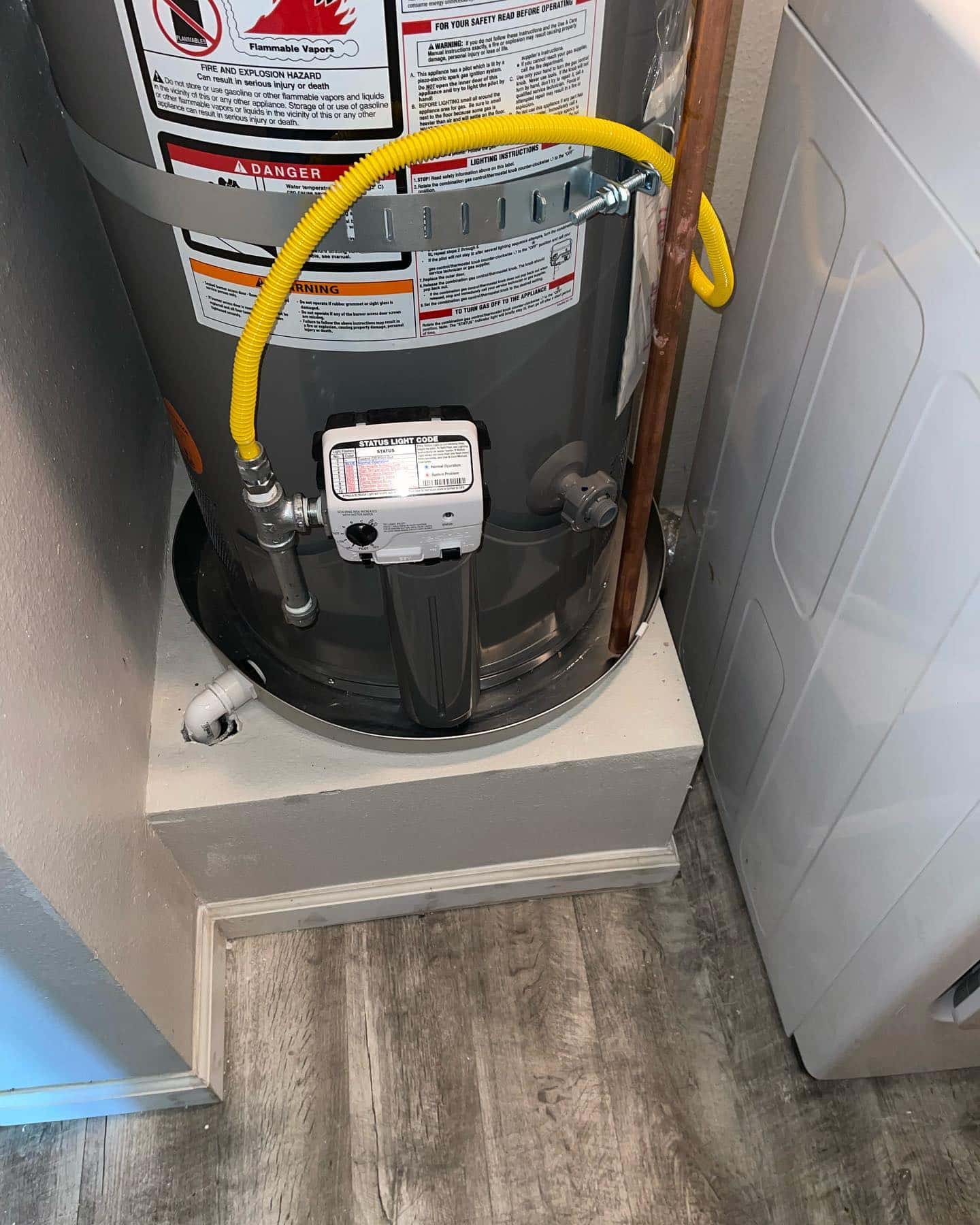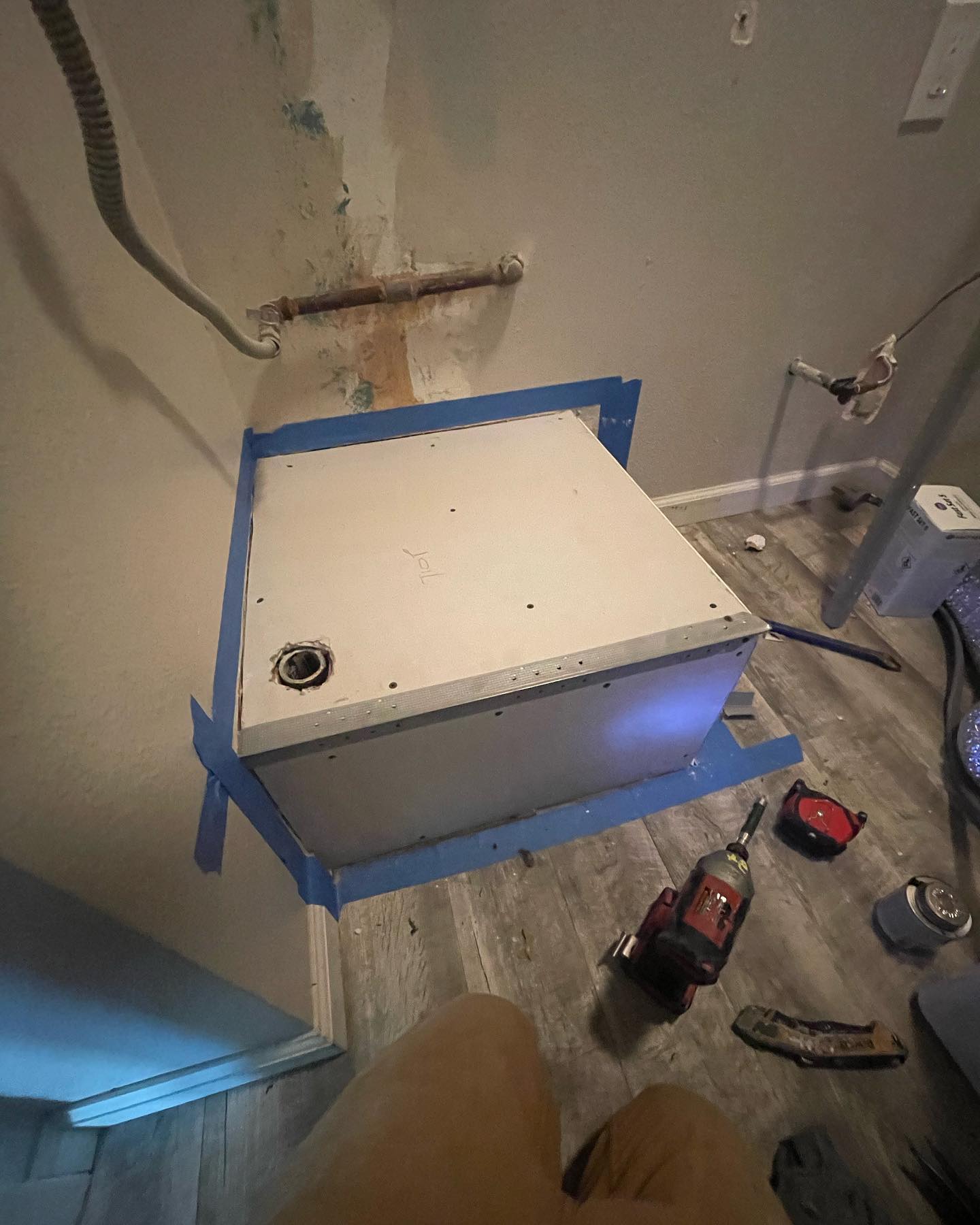Leaning Water Heaters Can Be A Safety Concern


David Jones
Senior Contributor
David Jones is a seasoned home inspector and construction expert with over 20 years of experience. He specializes in structural integrity, foundation issues, and detailed home safety assessments.
View Full Profile →
Discovering that your water heater is leaning can be an alarming and confusing experience. This phenomenon, while not extremely common, can have significant implications for both the safety and functionality of your home’s hot water system.
Reasons Why a Water Heater May Lean
Several factors can cause a water heater to lean, some of which are structural, while others may be related to the installation or environmental conditions:
 Water Heater Platform Not Properly Supported
Water Heater Platform Not Properly Supported
Improper Installation
A water heater that has not been installed correctly may start to lean over time. This can result from uneven support surfaces, inadequate bracing, or failure to use appropriate stands or platforms designed to hold the water heater’s weight.
Floor Settling or Deterioration
Over time, the floor supporting the water heater can settle or deteriorate, especially in older homes or those built on unstable ground. This can cause the water heater to lean if one side of the floor descends lower than the other.
Water Damage
Water leaks, either from the water heater itself or from other sources, can lead to water damage on the floor or support base. Continuous exposure to moisture can weaken the structural integrity of the base, causing the water heater to lean. If you
Seismic Activity
In areas prone to earthquakes or significant seismic activity, even minor tremors can shift the position of a water heater over time, especially if it’s not properly secured.
The Most Common Scenarios for a Leaning Water Heater
A common example of this is a water heater starts leaking and the water penetrates the wood underneath, weakening the wood. A 50 gallon water heater is approximately 150 lbs of tank and 420 lbs of water. This equals about 570 lbs. All of this weight causes the platform to sag or the legs of the water heater to sink into the wood or drywall beneath, causing the water heater to lean.
The second most common cause of a water heater leaning is the water heater being placed on a platform that was built for a smaller one.
Water heaters, especially in seismic zones, are often required to be strapped to prevent them from moving during an earthquake. However, if these straps are improperly installed or adjusted, they can lead to issues including:
-
Uneven Pressure: If the straps are tightened excessively or unevenly, they can exert uneven pressure on the water heater’s body. Over time, this pressure can cause the tank to deform slightly and begin to lean.
-
Incorrect Placement: Straps placed too high or too low on the water heater can create an imbalance, especially if the water heater is not fully vertical to begin with. Proper placement is crucial to ensure that the water heater remains stable and upright.
-
Faulty Installation: If the straps are anchored improperly to walls or supports that are not structurally sound, the anchors may loosen over time. This can lead to a gradual leaning of the water heater as it begins to shift under its own weight or due to the pull of inadequately secured straps.
-
Strap Deterioration: Over time, straps can deteriorate due to rust or wear, especially in humid environments or if they’re made from materials that are not suited to the environment. As the straps weaken, they may not hold the water heater as securely, leading to a lean.



Implications of Ignoring a Leaning Water Heater
Ignoring a leaning water heater can lead to several problems, ranging from minor inconveniences to major safety hazards:
Reduced Efficiency and Performance

A leaning water heater may cause uneven stress on the tank, affecting its ability to heat water efficiently. This can lead to higher energy bills and reduced performance.
Increased Risk of Leaks or Bursting
The structural stress on a leaning water heater increases the risk of developing leaks or, in extreme cases, the tank bursting. This can not only cause significant water damage to your home and necessitate expensive repairs but can pose a significant safety concern.
Safety Hazards
A severely leaning water heater poses a safety risk. It can topple over in the event of an earthquake or if accidentally bumped into, potentially causing injury or damage to nearby objects.
What Can Be Done?
Assessment
Assess the water heater situation and determine the cause of the leaning. If you are unsure of the cause or feel a second opinion would be best then have it assessed by a professional plumber or a water heater specialist. They can determine the cause of the lean and suggest the best course of action.
Corrective Measures
Depending on the cause, corrective measures may include re-leveling the floor, repairing or replacing the water heater’s platform, or installing seismic straps to secure the water heater in earthquake-prone areas.
If the basic platform structure appears sound and only the plywood sheeting has sagged, then laying a stronger/thicker piece of new plywood over the old may provide the needed support for the water heater. If the platform is badly damaged, then replacing or rebuilding the platform is best.
When the water heater is just a little out of plumb, many owners will just monitor the water heater and fix it if the situation gets worse. While checking the water heater, remember to look at the water connections. If the connections are hard-piped, then the leaning water heater may put undue stress on the water pipes. If the water heater supply lines / connections are flexible tubing, then there is less likelihood of stress on these.
If mold or mildew growth is suspected or detected, it’s important to address it immediately. If it is in the wall, then it may also have penetrated any insulation in the wall. Homeowners can often correct and repair small mold and mildew areas themselves, however this can be complex and requires some research as there is a wide range of mold types with some being more dangerous/concerning than others. Small areas can be cleaned with a mold-killing solution, but extensive mold infestations may require professional remediation services.
Regular Maintenance
Regular maintenance, including checking for leaks, ensuring the platform’s integrity, and securing the water heater properly, can prevent future leaning issues.
Having a properly plumbed pan under the water heater generally reduces damage to a water heater platform. If you are replacing the water heater or rebuilding the platform, remember to put a pan under the water heater. These pans are only a few dollars and can save you a significant amount in water damage and repair costs.
Replacement
In cases where the water heater is old or the damage to its support structure is extensive, replacing the water heater might be the most cost-effective and safest option.
Leaning Water Heater Considerations
A leaning water heater is a sign that should not be ignored. By understanding the potential causes and implications, homeowners and buyers can take proactive steps to address the issue, ensuring their home’s safety and the efficient operation of their hot water system. Regular inspections and maintenance, along with prompt action when issues arise, are key to preventing the risks associated with a leaning water heater.